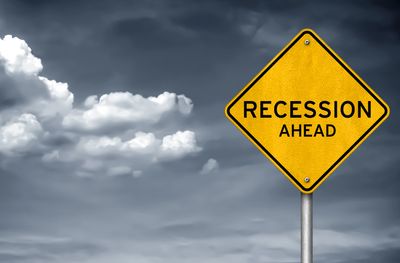10 Reasons Why Multifamily is Recession-Resistant
In times of economic uncertainty, many investors seek stable, reliable opportunities to protect their wealth and maintain steady returns. Multifamily real estate, often referred to as apartment buildings, has proven itself to be one of the most recession-resistant asset classes in the real estate sector. At Blue Line Capital, we specialize in identifying multifamily investment opportunities that offer stability and growth, even during challenging economic times.
1. Housing is a Basic Necessity
Unlike discretionary spending on luxury goods or entertainment, housing is a fundamental human need. Regardless of economic conditions, people require a place to live. This inherent demand for shelter ensures that multifamily properties maintain consistent occupancy rates, even when the broader economy is struggling.
During recessions, some individuals may downsize from single-family homes or luxury apartments to more affordable rental units, increasing demand for multifamily properties. This shift makes multifamily housing particularly resilient to economic fluctuations compared to other asset classes like retail or office space, which depend on consumer spending or business growth.
2. Diverse Income Streams Mitigate Risk
Multifamily properties offer built-in diversification through multiple units generating rental income. This diversification reduces risk because a vacancy in one unit does not significantly impact overall cash flow. For example, a 100-unit apartment building with a 5% vacancy rate still has 95 units producing income.
Contrast this with single-family rentals or commercial properties, where a single vacancy can mean the loss of 100% of the rental income. The diversified income streams of multifamily properties provide a cushion during economic downturns, helping investors maintain steady returns.
3. Strong Demand for Affordable Housing
Economic downturns often lead to a greater demand for affordable housing as people adjust their budgets. Multifamily properties, particularly those in the Class B and Class C categories, cater to this demand. Class B properties are well-maintained, mid-market rentals, while Class C properties offer basic, no-frills housing options.
During a recession, tenants from higher-end properties may "trade down" to more affordable units, driving occupancy rates in Class B and C properties. This trend underscores the recession-resistant nature of multifamily real estate and makes it a smart choice for investors seeking stability.
4. Government Support for Renters
In challenging economic times, governments often step in to provide support for renters through stimulus packages, unemployment benefits, or rental assistance programs. These measures help ensure that tenants can continue paying rent, even if their income has been impacted by a recession.
For multifamily property owners, this safety net reduces the risk of widespread rent defaults, ensuring a more predictable income stream. This level of government support is rarely available for other types of commercial real estate, such as retail or office properties, making multifamily housing a more secure investment.
5. Lower Default Rates on Multifamily Loans
Multifamily loans tend to have lower default rates compared to other real estate loans. Lenders recognize the recession-resistant nature of multifamily properties and are often more willing to provide favorable financing terms for these investments. During economic downturns, this access to capital can be a crucial factor in maintaining and growing a multifamily portfolio.
6. Value-Add Opportunities Create Upside
Recessions often present unique opportunities for value-add strategies in multifamily investing. Value-add properties are those that require renovations or operational improvements to enhance their profitability. During a downturn, construction and labor costs may decrease, making it more cost-effective to execute value-add strategies.
By upgrading units, improving amenities, or streamlining property management, investors can increase rental income and property value. These improvements can not only enhance cash flow during the hold period but also position the property for significant appreciation when the market recovers.
7. Demographic Trends Favor Multifamily Housing
Long-term demographic trends continue to support the demand for multifamily housing. Factors such as population growth, urbanization, and changing household preferences have driven sustained demand for rental properties. Even during recessions, these trends remain intact, ensuring a steady pool of renters for multifamily units.
For example, younger generations, such as millennials and Gen Z, are increasingly prioritizing flexibility over homeownership, contributing to a robust rental market. Additionally, retirees looking to downsize often find multifamily properties appealing, further diversifying the tenant base.
8. Inflation Protection
Multifamily real estate provides a natural hedge against inflation. During periods of economic instability, inflation can erode the value of cash and fixed-income investments. However, multifamily properties typically benefit from inflation, as rents and property values tend to increase in tandem with rising prices.
This inflation protection ensures that investors in multifamily real estate preserve their purchasing power and continue to generate returns, even when other asset classes may falter.
9. Cash Flow
One of the most appealing aspects of multifamily real estate is it's ability to generate cash flow. Even during a recession, tenants prioritize paying rent, helping to ensure an income stream for property owners. This cash flow can then be distributed to investors.
For passive investors working with a trusted sponsor, this cash flow provides financial stability and peace of mind, even in uncertain economic times.
10. Resilience Proven by Historical Performance
The performance of multifamily real estate during past recessions speaks volumes about its resilience. For example, during the 2008 financial crisis, multifamily properties recovered more quickly and maintained higher occupancy rates compared to other real estate sectors. Similarly, during COVID-19, multifamily housing demonstrated remarkable stability, supported by consistent demand and government assistance programs.
This historical track record reinforces why multifamily real estate is a dependable asset class for navigating economic uncertainty and building long-term wealth.

This website uses cookies.
We use cookies to analyze website traffic and optimize your website experience. By accepting our use of cookies, your data will be aggregated with all other user data.